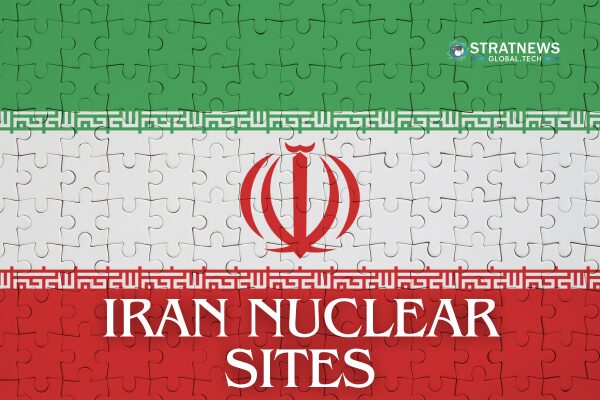Locations of Iran’s Nuclear Facilities
Iran’s nuclear programme and facilities span several key sites. While fears of Israeli airstrikes have persisted for decades, only some of these facilities are underground. These sites play different roles in uranium enrichment, research, and energy production.
Does Iran Have a Nuclear Weapons Programme?
The US and the United Nations’ nuclear watchdog believe that Iran once ran a coordinated, secret nuclear weapons programme. This activity is thought to have ended in 2003. Iran, however, strongly denies ever having had or planning to develop nuclear weapons.
In 2015, Iran signed a deal with world powers. This agreement limited its nuclear activities in return for sanctions relief. However, after US President Donald Trump withdrew from the deal in 2018, Iran gradually stopped adhering to those restrictions.
Is Iran Increasing Its Uranium Enrichment?
Yes. Since the 2015 deal collapsed, Iran has expanded its uranium enrichment efforts. This has significantly reduced the time it would need to produce enough weapons-grade uranium. While the agreement extended that “breakout time” to a year, it is now down to just a few days or slightly more than a week.
Iran enriches uranium up to 60% purity at two sites. Weapons-grade requires 90%. If this uranium is further enriched, Iran could produce material for up to six bombs, according to IAEA standards. However, making a nuclear bomb would take more time, and experts differ on how long that would be.
Natanz: Iran’s Main Enrichment Site
Natanz is a key enrichment site, located south of Tehran near Qom. It consists of the underground Fuel Enrichment Plant (FEP) and the above-ground Pilot Fuel Enrichment Plant (PFEP). The FEP can hold up to 50,000 centrifuges, though around 16,000 are currently installed, with 13,000 active. These refine uranium to about 5% purity.
In 2021, an explosion and a power outage—blamed by Iran on Israel—damaged centrifuges at the FEP. The PFEP contains a few hundred centrifuges and handles enrichment up to 60% purity.
Fordow: A Site Dug into a Mountain
Located on the opposite side of Qom, Fordow is dug deep into a mountain, offering better protection from attacks. Iran was not allowed to enrich uranium there under the 2015 deal. Now, about 2,000 centrifuges are active, with up to 350 enriching to 60% purity. The US, UK, and France revealed Fordow’s existence in 2009, criticising it as inconsistent with peaceful nuclear aims.
Isfahan: A Major Nuclear Technology Hub
Near Isfahan, Iran has a large nuclear centre that includes a uranium conversion facility (UCF) and the Fuel Plate Fabrication Plant (FPFP). The site processes uranium into hexafluoride gas for enrichment. It also stores enriched uranium and has machines for making uranium metal, which is closely linked to nuclear weapons development. In 2022, the IAEA called it a “new location” due to the presence of centrifuge part manufacturing.
Khondab: A Former Heavy-Water Reactor
Previously called Arak, the Khondab site features a partially built heavy-water reactor. These reactors can produce plutonium, which can also fuel nuclear weapons. Under the 2015 agreement, Iran removed the reactor’s core and filled it with concrete. The design was changed to prevent weapon-grade plutonium production. Iran now plans to begin operations in 2026.
Tehran Research Centre
The capital hosts a nuclear research facility, including a research reactor. It supports Iran’s nuclear science but raises international concerns over transparency and oversight.
Bushehr: Iran’s Only Nuclear Power Plant
Bushehr is located on the Gulf coast and is Iran’s only functioning nuclear power plant. It uses Russian-supplied fuel, which Russia takes back after use, lowering proliferation risks.
with inputs from Reuters


